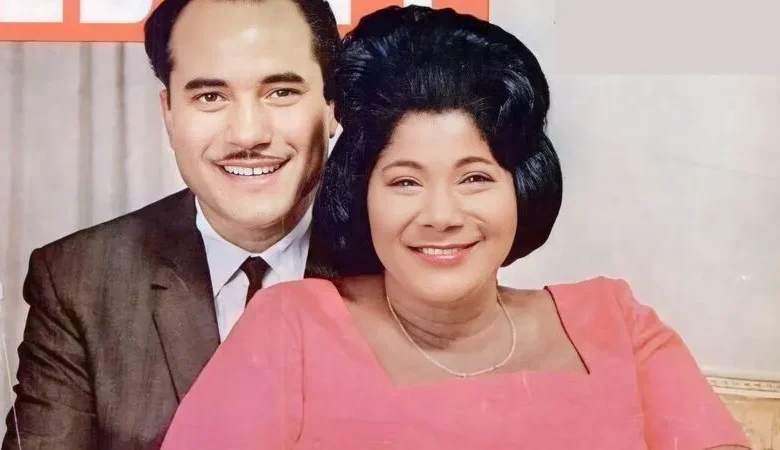Sigmond Galloway: Life, Career, and Legacy of a Jazz Singer

Introduction
Sigmond Galloway may not be a household name in today’s music industry, yet his story holds a unique place in the history of jazz and gospel. Known primarily for his association with legendary gospel singer Mahalia Jackson, Galloway himself was a jazz musician whose life was filled with music, passion, and complexities. His journey reflects the struggles and triumphs of an artist who lived during a time when jazz and gospel were shaping the cultural fabric of America.
The legacy of Sigmond Galloway is often overshadowed by his high-profile marriage, but to reduce his identity to that alone would be unjust. Galloway’s contributions to music, along with the dramatic turns in his personal life, offer valuable insight into the challenges faced by musicians in the mid-20th century. This article explores his life story, career, relationship with Mahalia Jackson, and his enduring influence on the world of jazz.
Early Life and Background
Sigmond Galloway was born in Alabama in 1922, during a time when the American South was undergoing social and cultural shifts. Growing up in a community where music was deeply rooted in everyday life, Galloway developed a strong appreciation for rhythm and melody at an early age. While records about his early education remain scarce, it is believed that he was self-taught in many aspects of music, learning from community gatherings and church choirs that exposed him to both jazz and gospel.
His upbringing in Alabama played a pivotal role in shaping his musical instincts. The African American communities of the South used music as a form of expression, resistance, and celebration, and Galloway’s exposure to this environment undoubtedly influenced his career path. Like many African American musicians of the time, he faced racial discrimination and economic hardship, but his passion for music provided him with a sense of direction and identity. This determination carried him forward as he began exploring opportunities in the jazz scene.
Career in Music
Sigmond Galloway’s career as a jazz singer placed him within a genre that was rapidly gaining momentum in the United States. Jazz was more than just a musical style; it was a movement that embodied creativity, improvisation, and cultural exchange. Galloway carved out his own space in this world, though his work never reached the same level of fame as some of his contemporaries.
Known for his smooth vocal delivery and ability to convey emotion through song, Galloway performed in local venues and small gatherings where jazz lovers appreciated his talent. His career, however, faced limitations due to the highly competitive nature of the industry. Unlike major stars who enjoyed record deals and nationwide recognition, Galloway remained a figure within the grassroots jazz scene. This does not diminish his artistry, but rather highlights the challenges many musicians of the era faced—balancing their passion for music with financial realities.
Despite these hurdles, Galloway’s influence on those who heard him was significant. Jazz was about connection, and his performances embodied the raw, soulful essence of the genre. Though recordings of his work are limited or lost to time, his career is remembered through the legacy of those who knew him personally and through his connection to Mahalia Jackson, whose career intersected with his in a very public way.
Relationship with Mahalia Jackson
Perhaps the most publicized chapter of Sigmond Galloway’s life was his marriage to Mahalia Jackson, the “Queen of Gospel.” The two married in 1964, but their relationship was turbulent from the start. Jackson, already a global star with a demanding career, struggled to balance her professional life with the expectations of her marriage. Galloway, on the other hand, was navigating his own challenges in the jazz world, which sometimes clashed with Jackson’s deeply religious devotion to gospel music.
Their differences became increasingly visible as time went on. Jackson’s fame and constant touring placed enormous strain on their marriage, while Galloway’s lifestyle choices reportedly created friction between the two. Accounts suggest that Galloway’s struggles with alcohol and personal issues further complicated the relationship. After just two years of marriage, they divorced in 1967. The separation was marked by public scrutiny, as Jackson’s fans and the media paid close attention to her private life.
Although their marriage was short-lived, it remains a significant part of Galloway’s story because of Jackson’s towering legacy in music. While Jackson continued to inspire millions through her gospel recordings, Galloway faded from the spotlight, remembered largely in connection to her. Still, this relationship highlighted the pressures musicians face when personal and professional lives collide, especially under the intense glare of fame.
Later Years and Legacy
Following his divorce from Mahalia Jackson, Sigmond Galloway lived a quieter life, away from the limelight. While information about his later years is limited, it is known that he continued to be connected to music in some capacity. However, without the platform of commercial success or widespread recognition, his career never regained significant momentum.
Galloway passed away in 1972, just a few years after his separation from Jackson. His death at a relatively young age brought a premature end to his story, leaving behind more questions than answers about his potential as an artist. Yet, his name endures in discussions about jazz history, largely due to his relationship with Jackson and his contributions to the genre.
Though he may not be remembered as a jazz legend, Sigmond Galloway’s story is a reminder of the many unsung artists who contributed to America’s rich musical heritage. His life reflects the struggles, complexities, and fleeting triumphs of musicians who pursued their passion in the face of adversity. For those who study the history of jazz and gospel, Galloway represents an important thread in the tapestry of mid-20th century African American music.
Conclusion
Sigmond Galloway’s journey from Alabama to the world of jazz is a story of ambition, artistry, and personal struggle. While his name is often overshadowed by his marriage to Mahalia Jackson, his contributions as a jazz singer deserve recognition. His life illustrates the challenges faced by musicians who lived in the shadow of greater fame but still played a role in shaping the soundscape of their time.
Ultimately, Galloway’s story is one of resilience. Though he did not achieve widespread acclaim, his passion for music, his experiences, and even his personal hardships provide a deeper understanding of the complexities of artists in mid-20th century America. Remembering Sigmond Galloway ensures that his voice—though quieter than some—continues to be part of the conversation about jazz, gospel, and the legacy of African American musicians.
Also Read: realtor




